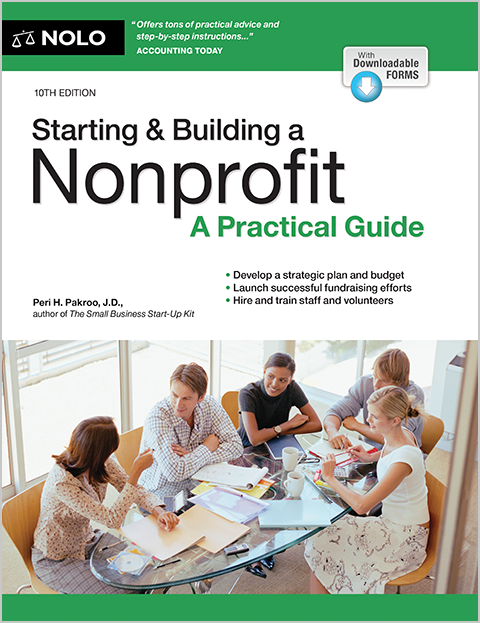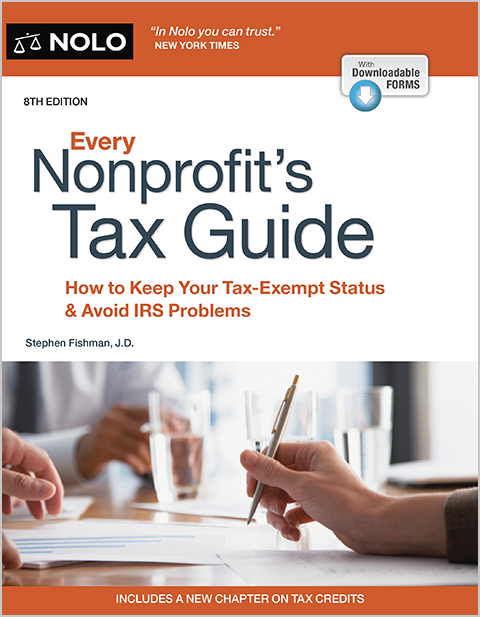Find out how to go about dissolving a nonprofit corporation in your state.
This article only covers the most basic kind of voluntary dissolution of a typical Georgia 501(c)(3) nonprofit corporation that's already doing business. There are different rules and procedures for other types of nonprofits and for other situations such as an involuntary dissolution.
Authorizing Dissolution
Closing starts with dissolution, and to dissolve your nonprofit, you will need a proposal to dissolve that includes a plan of dissolution. The plan will indicate how the nonprofit's remaining assets will be distributed, including who will receive assets after all creditors have been paid. With the proposal and plan in hand, Georgia law provides for voluntary dissolution as follows:
- if your nonprofit has members, by action of the directors followed by a vote or other consent of the members; or
- if your nonprofit doesn't have members, by a vote of the directors.
Under the first method, the board must first approve the proposal and plan of dissolution and then submit it to the members. The members then generally meet and vote to approve the dissolution. Alternatively, members may approve of dissolution by written consent.
Under the second method, it is up to the board alone to approve the proposal and plan of dissolution. Generally, the plan must be approved by a majority vote of the directors in office at the time of approval.
Make sure to properly record the proposal to dissolve, plan of dissolution, directors' votes, and, where necessary, members' votes or written consents. You'll need this information for filings with the state and the IRS.
Notices of Intent to Dissolve
Right after your nonprofit has approved dissolution ("upon approval"), you must file a notice of intent to dissolve with the Secretary of State (SOS). The notice must contain:
- the name of your nonprofit
- the date dissolution was authorized; and
- if member approval was required for dissolution, a statement that dissolution was duly approved by the members in accordance with subsection (a) of Georgia Code Section 14-3-1402.
A blank form for the notice of intent to dissolve (Form CD 525) is available for download from the SOS website.
You must also publish a notice of intent to dissolve in a newspaper. The required content for the newspaper notice is different than for the notice filed with the SOS. According to Georgia law, it must be in substantially this form:
NOTICE OF INTENT TO VOLUNTARILY DISSOLVE A CORPORATION
Notice is given that a notice of intent to dissolve _______________________ (name of corporation), a Georgia nonprofit corporation with its registered office at _______________________ (address of registered office), will be delivered to the Secretary of State for filing in accordance with the Georgia Nonprofit Corporation Code.
You may also need to include additional information. After arranging for publication, you must certify in writing to the SOS that the notice has been published.
Initial Notice to Attorney General
You eventually must file articles of dissolution for your nonprofit, but on or before that date you must give notice regarding the dissolution to the Attorney General (AG). You can't transfer any of your nonprofit's assets until 30 days after giving the AG notice.
Winding Up
After your nonprofit has filed its notice of intent to dissolve, it continues to exist only for the purpose of taking care of certain final matters that, collectively, are known as "winding up" the company. Winding up is largely about paying off any debts and then distributing any remaining assets, but there may also be other tasks involved.
Generally speaking, you can only distribute money and property after you've paid off all of your nonprofit's debts. Then, for asset distributions, there are specific rules you need to follow. For example, your nonprofit must return any items that were loaned to it on the condition that they would be returned upon dissolution. In addition, after paying off debts and returning loaned assets, a dissolving 501(c)(3) organization must distribute its remaining assets for tax-exempt purposes. In practice, this usually means distributing assets to one or more other 501(c)(3) organizations. Other asset distribution requirements, including items contained in your plan of dissolution, may also apply. If you have any questions, you should consult with a lawyer.
Notice to Creditors and Other Claimants
One other part of winding up your dissolved nonprofit involves giving notice to known creditors and other claimants. Giving notice is optional. However, doing so will help limit your liability and also allow you to more safely make final distributions of remaining assets. You can mail notice directly to known claimants after dissolution. (Unknown claimants receive notice through the publication of the notice of intent to dissolve mentioned above.)
Articles of Dissolution
After your nonprofit has paid off all known debts, liabilities, and obligations, and properly distributed remaining assets—in other words, after you've finished winding up—you'll need to file articles of dissolution with the SOS. The articles of dissolution must contain:
- the name of your nonprofit
- the date on which a notice of intent to dissolve was filed and a statement that it has not been revoked
- a statement that all of your nonprofit's known debts, liabilities, and obligations have been paid and discharged, or that adequate provision has been made for their payment and discharge
- a statement that all of the nonprofit's remaining property and assets have been distributed in accordance with the plan of dissolution, or that such property and assets have been deposited with the Office of the State Treasurer as provided in Section 14-3-1440 of the Georgia Nonprofit Corporation Code
- a statement that there are no actions pending against your nonprofit in any court, or that adequate provision has been made for the satisfaction of any judgment, order, or decree which may be entered against it in any pending action; and
- a statement that your nonprofit notified the Attorney General of its intent to dissolve.
A blank form for the articles of dissolution (Form CD 530) is available for download from the SOS website. A separate set of instructions on how to complete the form is also available from the SOS website. There is a $20 filing fee.
Final Notice to Attorney General
After "all or substantially all" of your nonprofit's assets have been transferred, you must send the AG a notice indicating who, other than creditors, received assets. For each recipient of assets, the list must show an address and what assets were received.
Federal Tax Note
For federal tax purposes, you'll need to file IRS Form 990 or IRS Form 990-EZ. You must include a completed Schedule N (Liquidation, Termination, Dissolution, or Significant Disposition of Assets), as well as copies of your articles of dissolution, proposal to dissolve, and plan of dissolution. When completing Form 990 or Form 990-EZ, you'll need to check the "Terminated" box in the header area on Page 1 of the return. For additional guidance, check out Every Nonprofit's Tax Guide, by Stephen Fishman (Nolo), go to the IRS website, or consult with a tax professional.
Additional Information
You can find additional information, such as forms, mailing addresses, phone numbers, and filing fees, on the SOS website.
Be aware that dissolving your nonprofit will not stop lawsuits started by or against it before dissolution. Moreover, for certain claims or liability, it may be possible to start new legal actions against your nonprofit up to five years after dissolution.
This article covers only the most basic steps of voluntary dissolution after your nonprofit has started doing business. There are many additional, more specific rules, covering things like:
- involuntary dissolution
- dissolution before starting operations
- dissolution of non-typical nonprofits
- what specific items should be contained in a plan of dissolution
- giving proper advance notice of member and director meetings
- the required number of member or director votes to approve dissolution
- steps to approve dissolution in writing without a meeting
- when and how to deposit remaining assets with the state
- what kinds of newspapers must be used to publish a notice of intent to dissolve
- what needs to be included in mailed notices to known creditors and claimants; and
- how to respond to legal claims after dissolution.
In addition, your articles of incorporation or bylaws may contain rules that apply instead of, or along with, state law. You are strongly encouraged to consult with a lawyer to obtain additional information on these and other points.
Dissolving and winding up your nonprofit corporation is only one piece of the process of closing your organization. For further, general guidance on many of the other steps involved, check Nolo's 20-point checklist for closing a business and the Nolo article on what you need to know about closing a business.



